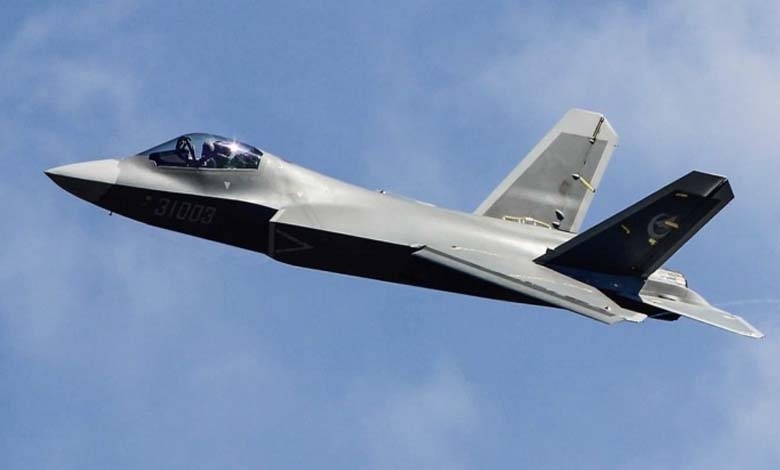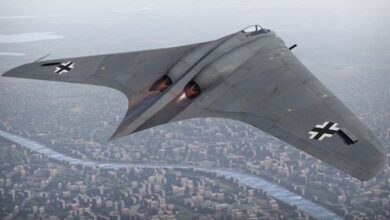Five Fifth-Generation Fighters: A New Era for the Chinese Air Force

China’s latest military parade was not just a show of strength but also a declaration of a new era in the development of its fighter fleet.
For the first time, China unveiled all variants of its fifth-generation fighters in service during the military parade held on September 3 to mark the 80th anniversary of Imperial Japan’s defeat in World War II.
-
J-20s Now Guarding Beijing’s Skies: A Strategic Leap in China’s Air Force Capabilities
-
J-20 Fighters: Beijing under the Protection of the “Phantom”
China’s journey with fifth-generation fighters began in February 2017 when it became the second country after the United States to field a domestically produced fifth-generation fighter, the J-20.
Over the following eight years, the J-20 has rapidly evolved, with improvements to its stealth features, airframe design, integration of new engines, and upgraded avionics, according to Military Watch magazine.
-
JL-3 Intercontinental: The Ballistic Missile Extending Beijing’s Reach Beyond the Atlantic
-
War, peace, and an unstoppable force… Xi’s messages at the military parade
The magazine highlighted that the J-20 program represents a landmark achievement for Chinese combat aviation, allowing, for the first time in the jet age, a fighter from a country other than Russia or the United States to compete seriously for the title of world’s top air-to-air fighter.
Although the J-20 participated in the previous military parade in October 2019, the latest parade showcased three versions of the fighter: the base model with WS-10C engines, the J-20S two-seater – the first of its kind among stealth fighters worldwide – enabling drone command and networked combat roles, and the upgraded J-20A/B with a more streamlined profile and lower radar cross-section, expected to be powered by next-generation WS-15 engines.
-
By land, sea, and air: China unveils its latest weapons at military parade
-
With Putin and Kim in Attendance… China Unveils the American Ship Killer
J-35 Fighters
The highlight of the parade, however, was the appearance of an entirely new fifth-generation fighter, the J-35, a medium-weight stealth fighter designed to complement the J-20.
Initially, the J-35 was thought to be developed only for aircraft carriers or export. However, its confirmed induction into the Chinese Air Force in July 2025 gave Beijing a unique advantage, making it the only country operating two different types of fifth-generation fighters simultaneously. This creates a mix of high- and low-altitude stealth aircraft similar to the U.S. F-22/F-35 combination.
-
Gripen Fighter Jets Steal the Spotlight in the Thailand–Cambodia War
-
Spectacular Progress: How Did China Build Its Air Power on Its Own?
The parade also revealed the naval variant of the J-35, making China the first global power to operate five different stealth fighter variants: three versions of the J-20 and two of the J-35.
Beyond individual aircraft displays, the parade highlighted integrated tactics, with formations combining J-20, J-16, and J-35, reflecting China’s strategy of merging air superiority, electronic warfare, and networked capabilities.
This diversity in stealth fighters underscores China’s position as the world’s second-leading power in advanced combat aviation, surpassing Russia, which has yet to produce large numbers of its Su-57.
-
Submarines, Missiles, and Fighters: A Comparison of Strategic Weapons between China and the United States
-
HQ-19: An Advanced Chinese Shield Enters Pakistan’s Defense Calculus
The simultaneous induction of the J-20 and J-35 offers China operational flexibility: the J-20 provides long-range air superiority and strategic interception, while the J-35 conducts carrier-based missions and delivers medium-range tactical support.
Last December, Beijing unveiled designs for sixth-generation fighters in early testing. The entry of these aircraft into service in the early 2030s may restructure production and potentially reduce the number of J-20 and J-35 aircraft in favor of newer, more technologically advanced, and cost-efficient platforms.
-
China bares its teeth… A major production leap for stealth fighters
-
Chinese J-10C vs. Russian MiG-29M: Which Fighter Jet Is Best for Egypt?
-
Decoding China’s Enigmatic Fighter Jet: A Triple-Power Revolution in the Sky
-
“The White Emperor”: Discover China’s Revolutionary Sixth-Generation Fighter












